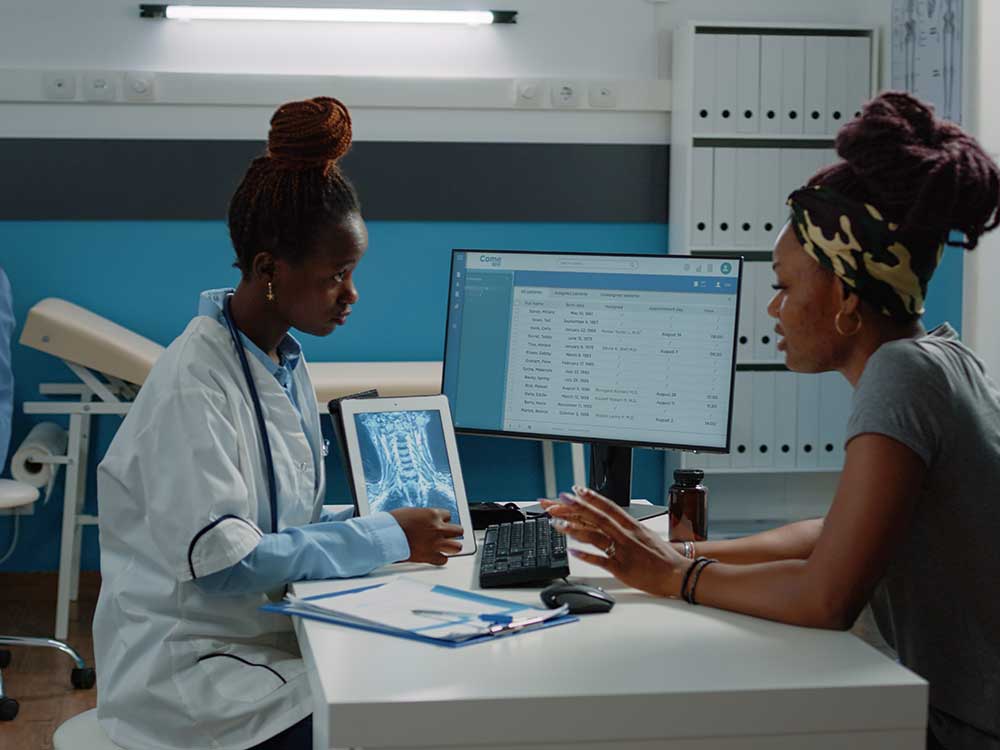Medical Administration Programs: What to Look for in a Top quality Training course
Medical Administration Programs: What to Look for in a Top quality Training course
Blog Article
Best Practices in Medical Management for Improving Efficiency and Decreasing Costs
In the ever-evolving landscape of healthcare, the pursuit of finest methods in medical administration is critical for enhancing performance and suppressing expenditures. By incorporating advanced innovations such as digital health documents and telemedicine, medical care suppliers can streamline procedures and boost client treatment.
Leveraging Advanced Modern Technology
In today's quickly evolving healthcare landscape, leveraging advanced innovation is no much longer optional yet important for effective clinical management. The integration of digital services right into medical care systems has actually transformed the way centers run, improving processes and boosting person care. Electronic Health And Wellness Records (EHRs) are pivotal, supplying extensive client data that can be accessed immediately by accredited workers, thus decreasing redundancy and reducing errors. By centralizing person info, EHRs eliminate the demand for troublesome documentation and promote seamless communication among doctor.
Telemedicine is one more technological development that has actually transformed individual interaction. It supplies comfort for both patients and health care professionals by making it possible for remote appointments, which can lower the need for in-person visits and optimize appointment organizing. Furthermore, telehealth systems can prolong healthcare access to rural or underserved areas, linking voids in care delivery.
Additionally, making use of Expert system (AI) and equipment understanding is becoming increasingly common in predictive analytics, allowing for very early discovery of prospective health and wellness problems and even more enlightened decision-making. These technologies, when integrated successfully, can boost analysis accuracy and personalize individual treatment plans, ultimately causing boosted healthcare results and functional effectiveness.
Optimizing Resource Allowance
By strategically taking care of sources such as employees, devices, and financial resources, healthcare facilities can dramatically boost their functional performance, boost patient outcomes, and minimize unnecessary expenses. The initial step in enhancing resource allocation involves conducting a comprehensive assessment of current properties and identifying areas where sources might be underutilized or overextended.
Focusing on resource appropriation based upon patient demands and service needs is vital. This includes lining up resources with high-demand areas, such as emergency treatment or specialized therapies, to make certain prompt and efficient client care. Executing versatile staffing models can likewise enhance labor resources by adjusting employees appropriation in response to changing patient volumes. Additionally, welcoming telemedicine and various other technological services can ease physical source restraints by providing alternative methods for patient-provider communications.
Economic sources ought to be meticulously kept an eye on and alloted with critical insight to sustain both temporary functional requirements and long-lasting institutional goals. This includes investing in training programs that boost staff expertises and adopting energy-efficient practices that lower functional prices (medical administration). Inevitably, a maximized resource allotment method fosters a sustainable medical care atmosphere that is receptive, efficient, and economically sensible
Streamlining Process Procedures
When healthcare facilities aim to improve functional performance, streamlining process processes ends up being a pivotal focus. Efficient workflows minimize redundancy, remove unneeded actions, and boost sychronisation among medical care experts. This strategy not just accelerates solution delivery yet additionally improves the quality of client care.

Following, technology assimilation plays a considerable duty in improving workflows. Applying electronic health and wellness documents (EHRs) and computerized medical professional order entry (CPOE) systems reduces documentation, lessens human error, and makes certain information is accessible to all relevant employees. In addition, leveraging telemedicine systems can improve person appointments and follow-ups, minimizing the pressure on physical framework.

Inevitably, her comment is here streamlined operations bring about cost reductions and improved person complete satisfaction, cultivating a more sustainable health care environment.
Enhancing Data Monitoring
Building upon structured process, enhancing data management comes to be an important element in progressing medical care management. Efficient information administration systems are important for keeping exact person records, enhancing decision-making, and ensuring compliance with regulatory standards. By implementing robust data administration solutions, medical care centers can boost the top quality of client care while all at once reducing functional costs.
One key facet of boosting information administration is the assimilation of innovative digital wellness record (EHR) systems. These systems help with the smooth exchange of client details across different divisions, lowering replication of examinations and reducing errors. A well-designed EHR system supports information over at this website analytics, allowing healthcare companies to recognize trends and make notified decisions relating to patient treatment.
Moreover, safeguarding person data is critical. Taking on thorough cybersecurity actions, including security and regular audits, ensures the stability and privacy of sensitive information. This not only secures clients yet additionally preserves the establishment's online reputation.
Purchasing personnel training is another essential aspect. Educating medical care specialists on information monitoring methods enhances their capacity to successfully use modern technology, bring about boosted patient results. In verdict, improving data management via sophisticated innovation and comprehensive training is vital for accomplishing efficiency and price reduction in medical management.
Fostering Collaborative Communication
An essential element beforehand clinical management is fostering collaborative communication amongst healthcare specialists. Reliable communication is vital for guaranteeing smooth client care, enhancing therapy outcomes, and reducing mistakes. By urging open dialogue and coordination across multidisciplinary groups, healthcare organizations can improve their operational performance and reduce unneeded expenses.
Central to this strategy is the integration of communication innovations such as electronic health documents (EHRs) and secure messaging platforms, which help with the rapid exchange of vital client info. These devices allow doctor to access and share information in real time, making sure that all try here team members are informed and straightened in their decision-making procedures. Regular group meetings and interdisciplinary rounds can even more promote a society of collaboration and liability.
Training programs concentrated on boosting communication skills are also essential. These programs can aid staff establish the capability to convey information clearly and listen actively, thus minimizing misunderstandings and cultivating a helpful workplace. On top of that, taking on standard communication procedures, such as SBAR (Circumstance, Background, Assessment, Suggestion), can enhance the exchange of details, making certain that crucial information are shared succinctly and successfully. Inevitably, fostering collaborative interaction causes enhanced healthcare shipment and cost financial savings (medical administration).

Final Thought
Incorporating innovative innovation, such as digital health records and telemedicine, together with maximized source allocation and structured process processes, is important for enhancing performance in clinical management. Reliable information administration and promoting joint communication amongst healthcare teams are essential for lessening redundancies and enhancing care high quality. By prioritizing preventive treatment and involving in high quality improvement campaigns, health care organizations can accomplish substantial expense savings and boosted individual outcomes, thus making certain sustainable health care shipment in a progressively intricate atmosphere.
Report this page